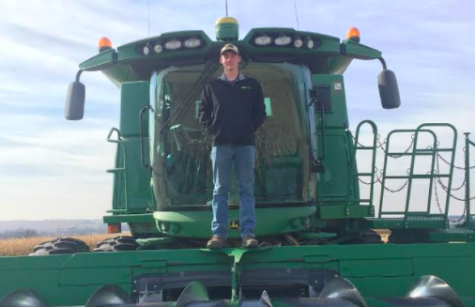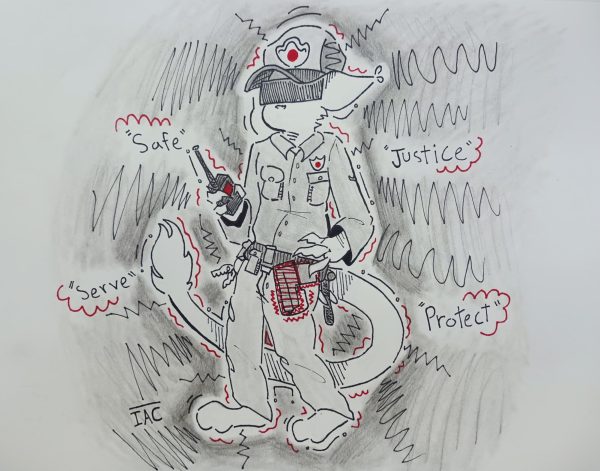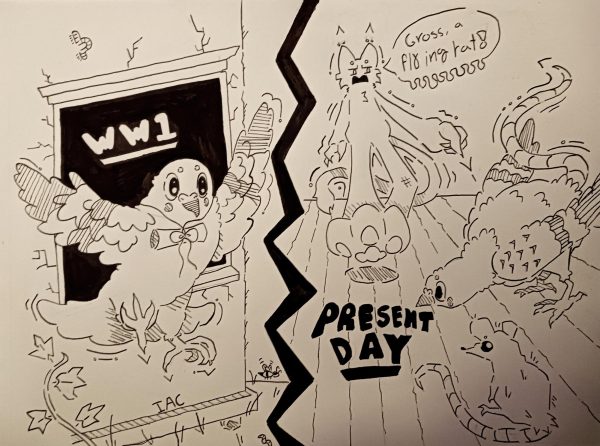Harvest: A Midwest Tradition

A lot has changed throughout the history of Iowa, but one thing remains the same. Every fall, farmers all across the state fire up the combines and head out to field to harvest, and Cass county is no exception. From dawn till dusk you’ll be sure find combines in the field and semis on the road to the grain elevators.
Many students at Atlantic High School live or work on farms and have been actively participating in harvest this year. Cale Pellett, senior and President of the Atlantic FFA Chapter, is one of those students helping out on his family farm, also known as Pelcorp. Pellett has been running the grain cart, and occasionally the combine and the semi. Pellett said that Pelcorp Farms has about 6,200 acres of beans and corn and said that harvest has “gone pretty good.” While it has been going pretty well, they started out with a bit of a wet start. “We got a good head start at the beginning of the season, and like many people got quite a bit of rain there in the end of August, and beginning of September so that pushed us back pretty good,” said Pellett.
Junior Tyler Comes also helps his family harvest on Double C Angus Farms and says things have also gone well for them. During this harvest season, Comes has been hauling grain in their straight truck, mowing corn stalks, and doing some basic cattle work. Comes said “Harvest 2k17 is the best to date. I am very happy with the yields and general outcome”. While Comes is happy with this years yields and overall performance, he says that 2018 is going to be “yuge.”
When preparing for harvest, Pelcorp get their combines out to do a general check through, run them over, and make sure there are no major problems. They also make sure that nothing needs to be replace and that they’re all functioning how they should. Occasionally there will be small animals living in the equipment so that needs to be checked too. Next, they make decide which fields need to be harvested first. That is determined by when they were planted and the hybrid’s maturity date. If a hybrid has a shorter maturity date, it is going to be harvested first. After that has been decided, the crops need to reach a proper moisture level, which is the percent of moisture within the grain. According to Pellett “the elevator likes…anywhere from 14-15 and 15-17 (percent).”
Once the Pellett’s get into Harvest, they run two combines in the field with grain carts pulled by tractors traveling alongside so the combine can unload on the go. From there, the grain cart can unload into the grain trucks with then take the grain either to ADM or to the Pellett’s grain bins. They begin harvest by getting out their wetter corn for use as high moisture corn or yearlage which is used for cattle feed on their operation. After the first round of corn they move to soybeans because “beans don’t take quite as long as corn.” After that they go to their regular moisture corn and that’s where they finish off the season.
After the corn or beans leave the field, they either go back to the farm to be stored to be sold later or fed to livestock, or they can be taken to a grain elevator like ADM or the ethanol plant to be sold. Pelcorp takes all of their crops to ADM, but Pellett says that he personally has a contract with the grain elevator for $3.50 a bushel; $0.45 higher than corn sold to ADM.
Once the harvest is all finished, the sheared off corn stalks still leave some potential for another type of harvest: cornstalk bales. Tyler Comes and Cale Pellett both share this same responsibility around this time of year. They get out the appropriate mower out and hook it onto a tractor to take out into the field. Pellett says it is important to get the right kind of mower when doing this job. “Preferably not a lawn mower or garden mower,” Pellett said. According to Pellett the process is fairly simple, “You can go ahead and mow those stalks down, rake ‘em up, farm ‘em up… do whatever you want with ‘em.” After the baling process, they bales are taken from the field to be used for feed, bedding, and some people just sell them.
After mowing and baling cornstalk bales, farmers can focus on the land for next year. For some this might mean extensive tillage and anhydrous drilling, a type of fertilizer that provides the needed nitrogen for the soil. Some farmers plant cover crops because they feel like it keeps the soil “loosened up” and some don’t do anything to their field at all in the fall.
Then it’s time to wrap it all up for the year. At least for Pelcorp, before putting the machinery into the shed for the winter, they make sure that the equipment in running well by doing general maintenance. They also clean up their equipment by washing it off and ensuring that it is free of debris. As Pellett put it, everything will be “hunky dory.”
Harvest is a busy, busy time of the year for many people around southwest Iowa. Although it’s the same process every year, no one year is like the other. Everything is always changing whether that’s the weather, technology, market prices, or jobs around the farm. For students like Cale and Tyler, it is truly the best time of the year.








